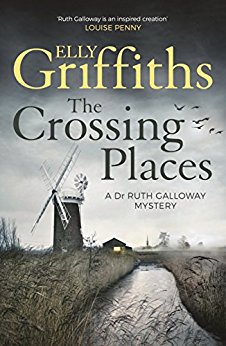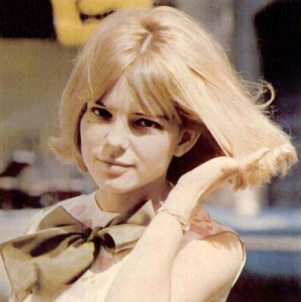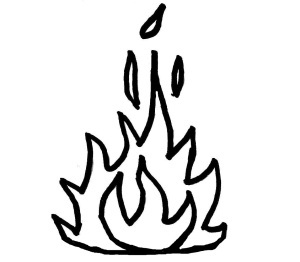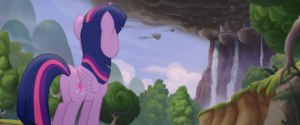Reading T.S. Eliot’s The Waste Land is synonymous with literary snobbery, especially if one claims to understand the entire thing. As I’ve written before, and as I will most likely be writing for for years to come, The Waste Land fucks me up, strips back everything I thought I knew about reading and writing and forces me to re-frame what I thought I knew.
Because of The Waste Land I have reevaluated religion, Shakespeare, education, mythology, springtime, poetry, and now Tarot Cards.
The mention of The Tarot in Eliot’s meta poem is something that I had conveniently overlooked and ignored since the first time I read it (drunk on insomnia and black coffee in a dusty lecture hall). I grew up a skeptic, and have since be proud of my firmly intellectual stance on the art (or science?) of fortune telling. I thought it a fancy for teen-aged girls or a scam for bored housewives who get a kick out of being told how to live their lives. But, The Tarot, those otherworldly cards full of symbolism and magic, should not be as easily dismissed.
Like any book, context is crucial – knowledge of Flemish Art enables one to better understand The Goldfinch, as does Classical Mythology for Harry Potter, and the Japanese occupation of Manchukuo when reading The Wind-up Bird Chronicle. Without context, books are mere shadows of what they could be. And despite my insistence to ignore the Tarot in Eliot, the cards seems to shuffle themselves into the books I was reading. So, I learnt the tarot in order to become a better reader.
Instead of a tool to predict the future, I use The Tarot to find meaning hidden on the page, within the words.
Now, to those who believe The Tarot is foolish and futile: fuck you.
And to the rest: go learn The Tarot, you will become a better reader. And then begin with these books:
The Raven Boys by Maggie Stiefvater: I initially read The Raven Boys as an antidote to a book hangover (for The Secret History of course). Endless scrolling through tumblr told me that The Raven Boys took the aesthetics of The Secret History: obsession, beauty, death, privilege, and mixed them with magic. It was Donna Tartt for teenagers.
Stiefvater so skillfully and perfectly weaves The Tarot into the narrative, that it underpins the entire series. Blue Sargent comes from a family of women who “trade in predictions”, and the Blue herself is aligned with The Page of Cups: You’re the page of cups, Maura had told her once. Look at all that potential she holds in that cup. Look, she even looks like you.
And there was not just one page of cups in this reading. Like the knight of pentacles, it was tripled. Three young people holding a cup of full of potential, all wearing Blue’s face.
The Waste Land by T.S. Eliot: Ah, of course. The first mention of The Tarot in The Waste Land is when the poet sits down with a famous clairvoyant named Madame Sosostris. At first (like me) Eliot seems to be skeptical of the women, suggesting that she is a fraud, but the poem goes forth and suggests that the six cards she draws provide insight into why the Western World has been reduced to the ‘waste land’ it is today. Don’t even attempt to understand The Waste Land without picking up a Tarot Deck first.
Harry Potter and The Half Blood Prince by J.K. Rowling: Sybill Trelawney (the seer that seems to embody the modern world’s attitude towards fortune telling) draws from her desk of cards “again and again…the lightening struck tower. Calamity. Disaster. Coming nearer all the time…”
Of course, her cards were right (just as most of her predictions are), and I think Dumbledore knew they were right – he had planned it after all. Yet, instead of changing the course of fate, Dumbledore allows the card to come true.
The Luminaries by Eleanor Catton: Saturated with the occult (mysterious happenings, seances, astrology) this beast of a book only mentions The Tarot in passing, but Catton has spoken of how the elaborate structure was inspired by her dabbling in Tarot: “As a lark I had been learning to read Tarot cards, and I chanced on a copy of Italo Calvino’s The Castle of Crossed Destinies, the plot of which is patterned on a Tarot spread. I found the book a terrible struggle, despite it being very slim, and, while struggling through it, I wondered why it was that novels of high structural complexity were so often inert, and why it was that structural patterning so often stood in the way of the reader’s entertainment and pleasure. Did structure have to come at the expense of plot? Or could it be possible for a novel to be structurally ornate and actively plotted at the same time? I thought about the novel that I wished The Castle of Crossed Destinies had been – and this, at last, was my negative-charge influence, defiant rather than imitative, longed-for rather than loved.”
Jonathan Strange and Mr Norrell by Susanna Clarke: in a novel seeped with magic and prophesy, it is no surprise that The Tarot appears. Chapter 21 is the stage for two in-depth tarot readings – one is standard and the other provides a sinister warning as the cards change, duplicating themselves. Despite Mr Norrell declaring “telling fortunes with picture cards – it is everything I despise!”, he has no idea how much the cards mirror his life.

- More






